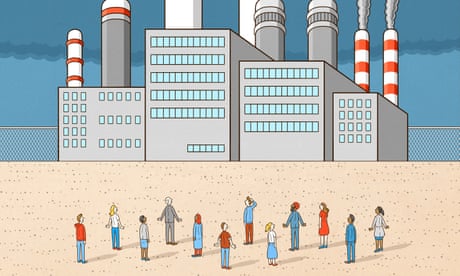











TASSANEE VEJPONGSA
Fri, November 27, 2020,
BANGKOK (AP) — Pro-democracy demonstrators in Thailand, undeterred by arrest warrants and the possibility of violent attacks, staged another rally on Friday, poking fun at their critics and warning of the possibility of a military coup.
The potential for violence was illustrated after their last rally on Wednesday, when in the hours after it ended, two men were reportedly shot and critically wounded. Although the incident remains murky and its connection to the rally unclear, it was a reminder that the student protesters are vulnerable, especially because of the passions they inspire among some of their opponents.
The protest movement’s core demands are for Prime Minister Prayuth Chan-ocha and his government to step down, the constitution to be amended to be more democratic, and the monarchy to be reformed to make it more accountable.
Their demand concerning the monarchy is the most controversial and earns them the most enemies. The royal institution by law and tradition is virtually untouchable, and regarded by many as the bedrock of national identity. The military has declared defense of the monarchy to be among its foremost duties.
The protest leaders believe that King Maha Vajiralongkorn holds more power than is appropriate under a constitutional monarchy, and have made that the centerpiece of their campaigning in recent weeks. Although any criticism of the monarchy used to be taboo, speeches at the rallies — as well as signs and chants __ include caustic words about the king and the palace.
In response, Thai authorities this past week escalated their legal battle against protest leaders, charging 12 of them with violating a harsh law against defaming the monarchy. The lese majeste law carries a penalty of three to 15 years' imprisonment, but has not been used for the past three years.
Historically, defending the monarchy has been abused for political reasons. It has also triggered violence, most notably in 1976, when it led to the killings of dozens of students at a university protest against the return from exile of an ousted military dictator. That event was the trigger for a coup, and since then Thailand has had successful coups in 1977, 1991, 2006 and 2014.
There is concern that if the government feels it cannot control the protests, which show little sign of abating, it may impose martial law or be ousted by the army in a coup.
Some speakers on Friday evening urged the crowd to take measures to resist any coup that might be launched.
Resisting any coup attempt was the nominal theme of the rally, which began in a festival-like atmosphere that has marked many of the protest events. Oversized inflatable yellow rubber ducks that became icons of the movement after they were used as shields against police water cannons were joined by balloons in the image of silvery space aliens. The balloons are displayed to mock accusations that foreigners — “aliens” — fund and direct the protest movement.

1/12
Thailand Protests
A protester holds a balloon shaped like an alien - to mock accusations that foreigners fund and direct their movement - during a rally Friday, Nov. 27, 2020 in Bangkok, Thailand. Pro-democracy demonstrators are continuing their protests calling for the government to step down and reforms to the constitution and the monarchy, despite legal charges being filed against them and the possibility of violence from their opponents or a military crackdown. (AP Photo/Sakchai Lalit)

2/12
CORRECTION Thailand Protests
A crowd gathers during a rally Friday, Nov. 27, 2020 in Bangkok, Thailand. Pro-democracy demonstrators are continuing their protests calling for the government to step down and reforms to the constitution and the monarchy, despite legal charges being filed against them and the possibility of violence from their opponents or a military crackdown. (AP Photo/Wason Wanichakorn)

3/12
Thailand Protests
Protesters flash three-finger protest gestures while holding balloons shaped like aliens - to mock accusations that foreigners fund and direct their movement - during a rally Friday, Nov. 27, 2020 in Bangkok, Thailand. Pro-democracy demonstrators are continuing their protests calling for the government to step down and reforms to the constitution and the monarchy, despite legal charges being filed against them and the possibility of violence from their opponents or a military crackdown. (AP Photo/Sakchai Lalit)

4/12
APTOPIX Thailand Protests
Inflatable yellow ducks, which have become good-humored symbols of resistance during anti-government rallies, are lifted over a crowd of protesters Friday, Nov. 27, 2020 in Bangkok, Thailand. Pro-democracy demonstrators are continuing their protests calling for the government to step down and reforms to the constitution and the monarchy, despite legal charges being filed against them and the possibility of violence from their opponents or a military crackdown. (AP Photo/Sakchai Lalit)

5/12
CORRECTION Thailand Protests
CORRECTS PHOTOGRAPHER'S NAME - A woman flashes a three-finger protest gesture while posing in front of mostly inflatable yellow ducks, which have become good-humored symbols of resistance during anti-government rallies, Friday, Nov. 27, 2020 in Bangkok, Thailand. Pro-democracy demonstrators are continuing their protests calling for the government to step down and reforms to the constitution and the monarchy, despite legal charges being filed against them and the possibility of violence from their opponents or a military crackdown. (AP Photo/Wason Wanichakorn)

6/12
Thailand Protests
Protesters flash LED lights from their mobile phones during a rally Friday, Nov. 27, 2020 in Bangkok, Thailand. Pro-democracy demonstrators are continuing their protests calling for the government to step down and reforms to the constitution and the monarchy, despite legal charges being filed against them and the possibility of violence from their opponents or a military crackdown. (AP Photo/Wason Wanichakorn)

7/12
APTOPIX Thailand Protests
CORRECTS PHOTOGRAPHER'S NAME - A protester adorns his beard with a yellow duck, which has become a good-humored symbol of resistance during anti-government rallies, Friday, Nov. 27, 2020 in Bangkok, Thailand. Pro-democracy demonstrators are continuing their protests calling for the government to step down and reforms to the constitution and the monarchy, despite legal charges being filed against them and the possibility of violence from their opponents or a military crackdown. (AP Photo/WasonWanichakorn)

8/12
CORRECTION Thailand Protests
Two women flash three-finger protest gestures while wearing headbands adorned with yellow ducks, which have become a good-humored symbol of resistance during anti-government rallies, Friday, Nov. 27, 2020 in Bangkok, Thailand. Pro-democracy demonstrators are continuing their protests calling for the government to step down and reforms to the constitution and the monarchy, despite legal charges being filed against them and the possibility of violence from their opponents or a military crackdown. (AP Photo/Wason Wanichakorn)

9/12
CORRECTION Thailand Protests
CORRECTS PHOTOGRAPHER'S NAME - A man holds up bubble blowers and merchandise designed as yellow ducks, which have become good-humored symbols of resistance during anti-government rallies, Friday, Nov. 27, 2020 in Bangkok, Thailand. Pro-democracy demonstrators are continuing their protests calling for the government to step down and reforms to the constitution and the monarchy, despite legal charges being filed against them and the possibility of violence from their opponents or a military crackdown. (AP Photo/Wason Wanichakorn)

10/12
Thailand Protests
A crowd of protesters flash three-finger protest gestures during a rally Friday, Nov. 27, 2020 in Bangkok, Thailand. Pro-democracy demonstrators are continuing their protests calling for the government to step down and reforms to the constitution and the monarchy, despite legal charges being filed against them and the possibility of violence from their opponents or a military crackdown. (AP Photo/Sakchai Lalit)

11/12
Thailand Protests
Inflatable yellow ducks, which have become good-humored symbols of resistance during anti-government rallies, are lifted over a crowd of protesters Friday, Nov. 27, 2020 in Bangkok, Thailand. Pro-democracy demonstrators are continuing their protests calling for the government to step down and reforms to the constitution and the monarchy, despite legal charges being filed against them and the possibility of violence from their opponents or a military crackdown. (AP Photo/Sakchai Lalit)

12/12
Thailand Protests
Inflatable yellow ducks, which have become good-humored symbols of resistance during anti-government rallies, are lifted over a crowd of protesters Friday, Nov. 27, 2020 in Bangkok, Thailand. Pro-democracy demonstrators are continuing their protests calling for the government to step down and reforms to the constitution and the monarchy, despite legal charges being filed against them and the possibility of violence from their opponents or a military crackdown. (AP Photo/Sakchai Lalit)
















:focal(364x193:365x194)/https://public-media.si-cdn.com/filer/f5/54/f5543099-6fa3-4e70-b789-7a8ce1e6c14f/photo_stuart_cohen_taree_research_close_up_1.jpg)